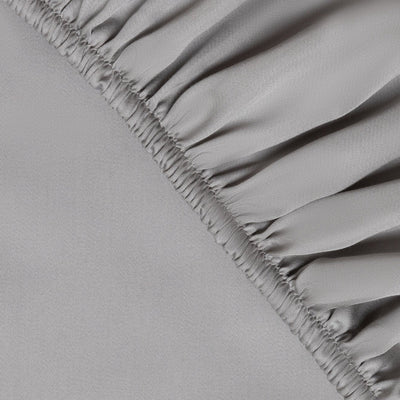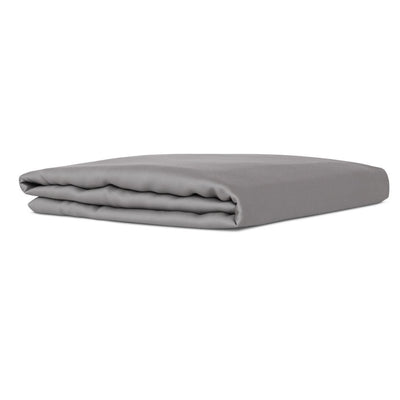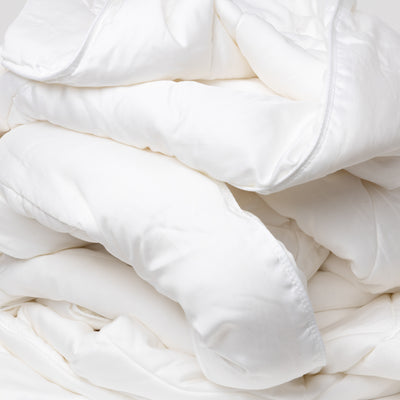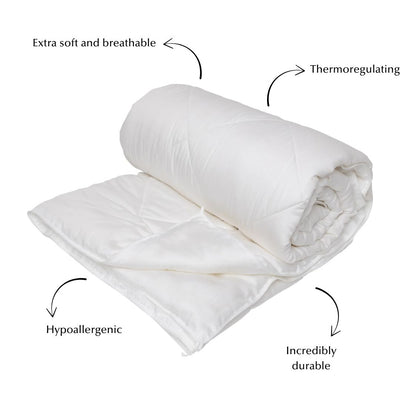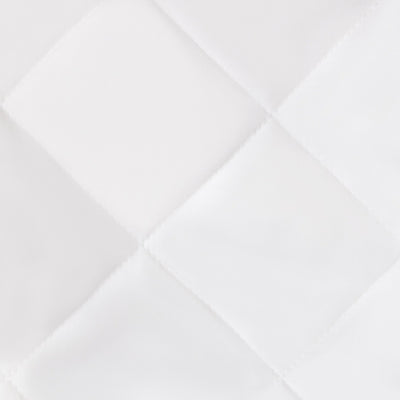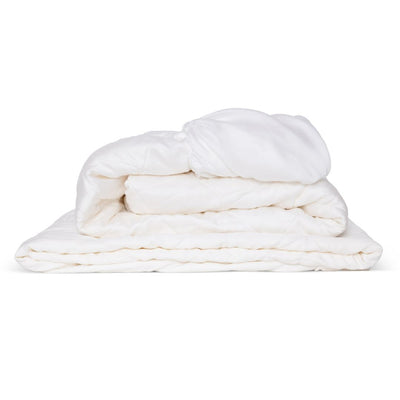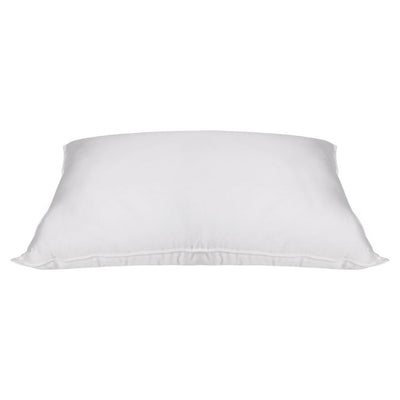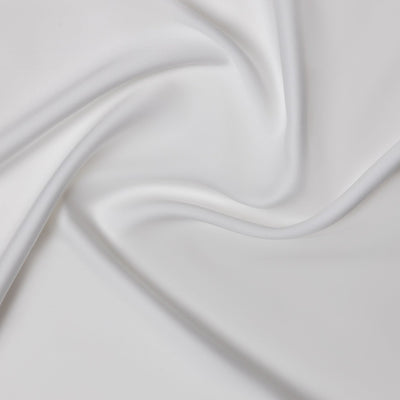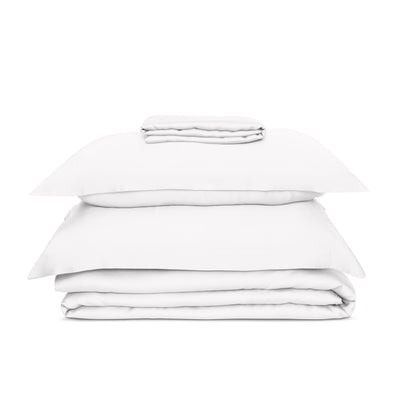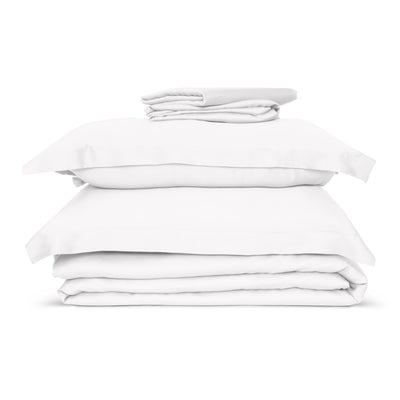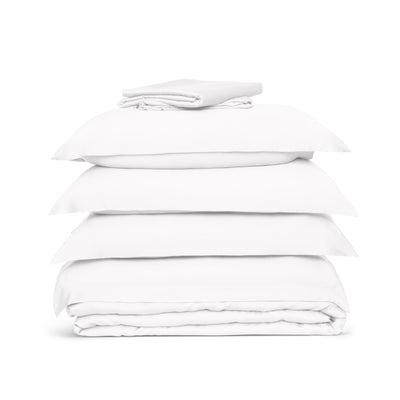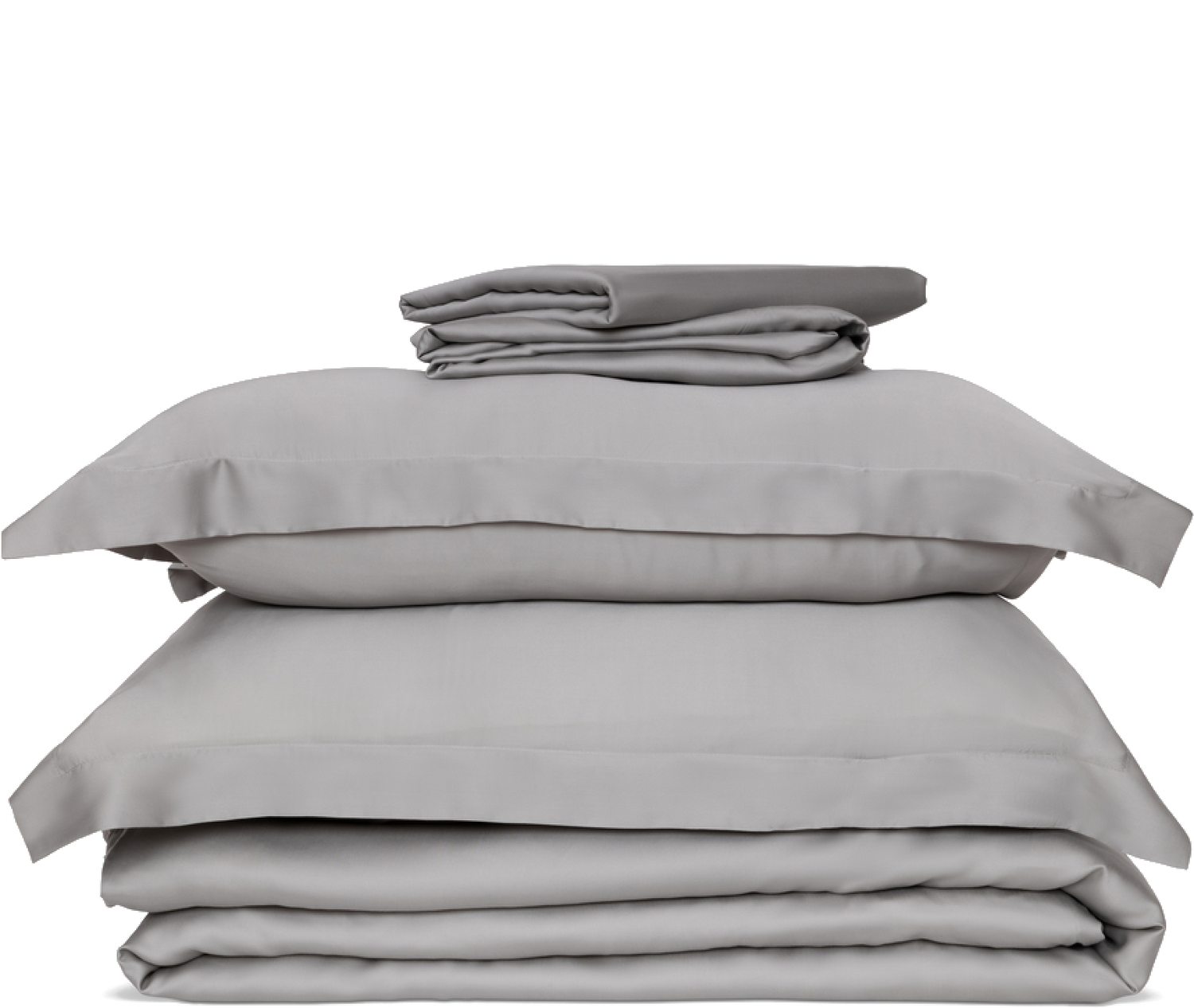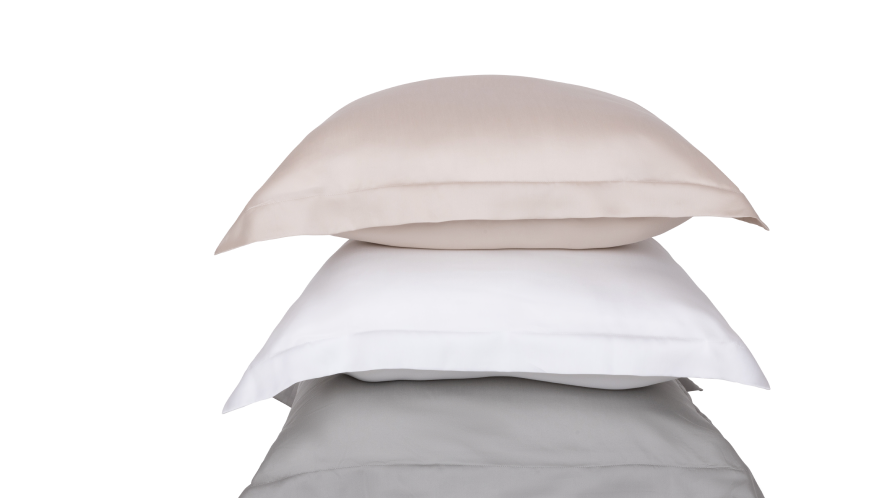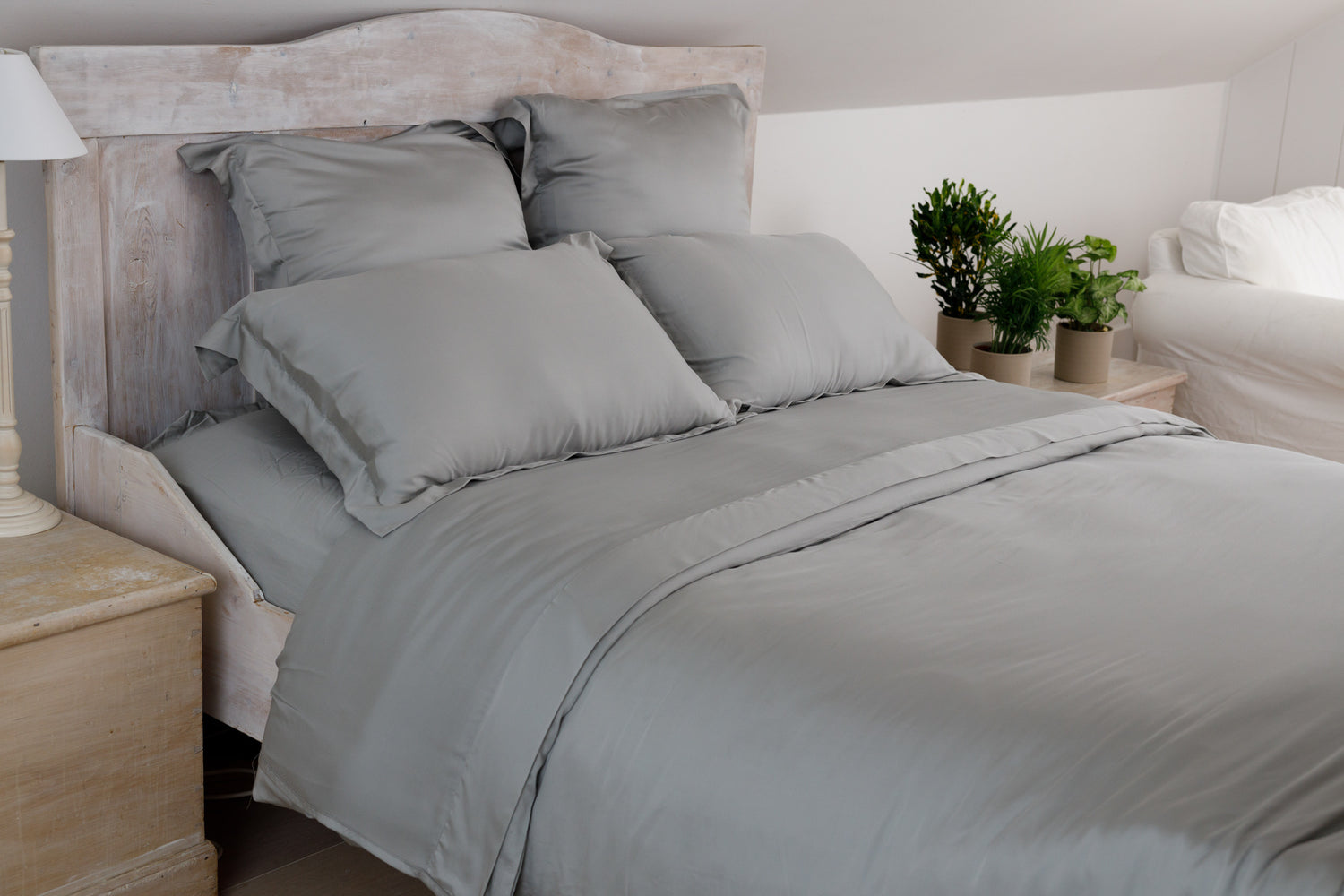There are few things more frustrating than a bed sheet that persistently comes away from your mattress each night, leaving you with having to readjust your bedding morning after morning. But what if we told you this needn’t be the case any longer?
In this article, we’ve explored the reasons why your sheets might keep coming off, as well as the ways you can prevent sheet slippage.
So, without further ado, why does your fitted bed sheet insist on unhooking itself?
Why do my sheets keep coming off?
There are a few common reasons why your fitted or flat bed sheets might consistently come loose, night after night:
- Your sheets are too small: if your sheets don’t fit the size of your mattress, they’ll struggle to get a good grip of the corners and will inevitably slip away. On the other hand, if your sheets are too big and baggy, they may struggle to get a firm-enough grip on the corners of your mattress.
- Your sheets don’t have enough grip: speaking of grippiness, if you’ve chosen a particularly smooth material, then it’s not uncommon to experience slippage. We’ve offered a serious of solutions below to combat this issue, but it may also be worth identifying ways to increase your bedding’s friction.
- Your sheets need replacing: sometimes, the reason your bedding doesn’t perform as expected is simply because it’s beginning to show signs of natural wear and tear. In these instances, while you can take temporary measures to prolong the lifespan, you’ll need to start looking for new bed sheets.
You might not consider sheet slippage to be a big deal, but over time it can contribute to disrupted sleep, as well as direct damage to your mattress if the protective layer keeps coming away.
Choosing the right fitted sheets
Choosing bed sheets means comparing a range of characteristics. The main three of which include the material used, the elasticity, and how easily the sheet will wrap around your mattress.
Material
The type of bed sheet fabric you choose can impact the level of ‘slippiness’ you experience. For instance, while silk and satin are both luxury materials, famed for being super soft and glossy, they’re not the most grippy! In contrast, cotton is one of the more common materials used. Of course, slippiness is only one factor to consider when buying new bedding; you should also take comfort and durability into account.
Elastic
Elasticity is an important factor to consider when browsing bed sheets, as it represents the amount of room you have to stretch your bedding over your mattress. In essence, the elastic should be able to firmly hold your sheet in place, without being so tight that it’s close to pinging off.
At Ethical Bedding, each of our fitted sheets are designed with strong, long-lasting, and durable elastic, that comfortably fits around the shape of your mattress and allows you to make your bed quickly and easily.
Depth
If you’re conscious of your sheet slipping away or unhooking from your mattress, it’s important to choose bedding with decent depth. Essentially, your bed sheet needs to be big enough to both cover the top of your mattress, but also tuck underneath as well.
This is the ‘depth’. The standard mattress thickness, or depth, is roughly 10 to 12 inches, but some mattresses can be as thick as 14+ inches.
How to keep sheets on bed
So, we’ve looked at the reasons why your fitted sheets might keep coming loose, as well as the ideal fitted sheet characteristics you might consider, but how exactly can you prevent your sheets from slipping off?
1. Measure your sheet pockets
When it comes to securing your bedding, it’s important to consider the depth of your sheet pockets and whether they’re going to comfortably tuck over the corners of your mattress. Sheet pockets are the elasticated corners of your fitted bed sheet, which vary in size depending on the style and size you choose.
So, if you sleep on a particularly deep mattress, you’ll need to invest in secure bed sheets that are equipped to match this. As a good rule of thumb, a set of sheets with ‘deep’ pockets will fit a mattress with a depth of between 14-15 inches.
If you’ve correctly identified the pocket size you need and you’re still having some problems fitting your sheets, you may need to adopt another of our handy techniques below.
2. Start at the top
One way of helping your bed sheets stay secure is by fitting the top corners first. The head of your bed can be tricky to reach when fitting sheets, so tackling these corners first can make the rest of the job that little bit simpler.
Additionally, this means that, at the very least, you can ensure the side of the bed you’re sleeping on will remain in place, even if the bottom does eventually come loose. Read our handy guide for even more information about how to put on bed sheets the right way.
3. Use sheet suspenders
Potentially one of the more obvious solutions on our list, though absolutely worth mentioning, you might want to consider using sheet suspenders to hold your bedding snugly in place and stop it slipping as you sleep.
If you’re unsure what they are, sheet suspenders are essentially elasticated straps that are attached to the bottom of your sheets and locked to the underside or side of your mattress. Not only are they a wholly practical purchase, but they’re also relatively inexpensive, and provide an affordable way of keeping your sheets on your bed.
4. Attach safety pins
Alternatively, if you don’t have sheet suspenders and you’re looking for a quick and affordable fix, you can always attach safety pins. This is another low-cost solution, so even if the pins don’t hold your sheet in place permanently, you at least know you haven’t made a huge investment! Just like suspenders, you’ll clip your sheet to the underside or side of your mattress – just be careful as it can be a somewhat fiddly job.
5. Add an under-sheet to your bed
If your bed sheet persistently comes loose, it might not be to do with the size of your bedding or the way it’s fitted; it might actually be the material and slippiness of the sheet.
If you think this may be the case, it can be useful to add an ‘under-sheet’ to your bedding set, which essentially adds another layer between you and your mattress. Incidentally, adding an under-sheet will also help protect your mattress for longer, as it can stop stains that penetrate your top sheet from seeping through.
6. Try non-slip rug corners
Another practical solution, non-slip rug corners can help to firm up your sheet and hold it in place all night long, no matter the material of your bedding. A great option if friction is your concern, and found at just about any hardware store, the textured surface of rug pads ensures your corners stay tucked under your mattress and prevent your bedding from shifting as you sleep.
7. Add a mattress pad or mattress topper
As previously highlighted, creating additional friction between your bed sheets and mattress is a great way of keeping sheets on your bed. While an under-sheet is one solution, another is a mattress topper.
However, there are some key differences between the two options. On the one hand, an under-sheet simply acts as a practical protective layer that holds your sheet in place, while a soft and spongy mattress topper has the additional benefit of increased comfort and cushioning, which is great if you have an overly-firm mattress.
To learn more about this type of bedding, read our handy guide: ‘what is a mattress topper used for?’.

Solidify Your Bed With Our Mattress Topper - From £79
8. Zip the sheets
Finally, one sure-fire solution you may not have considered is zipped sheets. Essentially, this type of sheet is sold in two parts: one part is positioned underneath your mattress, and the other is fit over your mattress corners as usual. You then attach the two parts with a handy zip that runs around the perimeter of your mattress.
While they’re not always available everywhere, zipped sheets are becoming increasingly accessible, so keep an eye out if you think it’s something you’ll benefit from.
What type of sheets will be least likely to slip?
To review, if you’re hoping for bedding that doesn’t move or become loose as you sleep, the features you should look out for in include:
- All-round elastic: for bedding that appropriately hooks over your mattress, look for fitted sheets that have an all-round elastic design. This helps your sheet to comfortably wrap around your mattress.
- Deep pockets: one of the most common reasons for bed sheets unhooking and coming loose is the corners not being properly-equipped to wrap around your mattress. With this in mind, keep an eye out for sheets with deep pockets.
- Non-slippery material: when browsing bed sheets, keep an eye out for materials that don’t naturally slip and slide. Alternatively, if you’re keen on investing in silky bedding, it’s often useful to also fit a mattress topper or under-sheet.
Hopefully, you now feel confident choosing secure bed sheets that stay in place all night long, no matter the size of your mattress. If you’re feeling inspired, check out our full range of luxury bedding, or for even more insight from our experienced sleep experts, including the differences between flat and fitted sheets, head on over to the Ethical Bedding blog.

